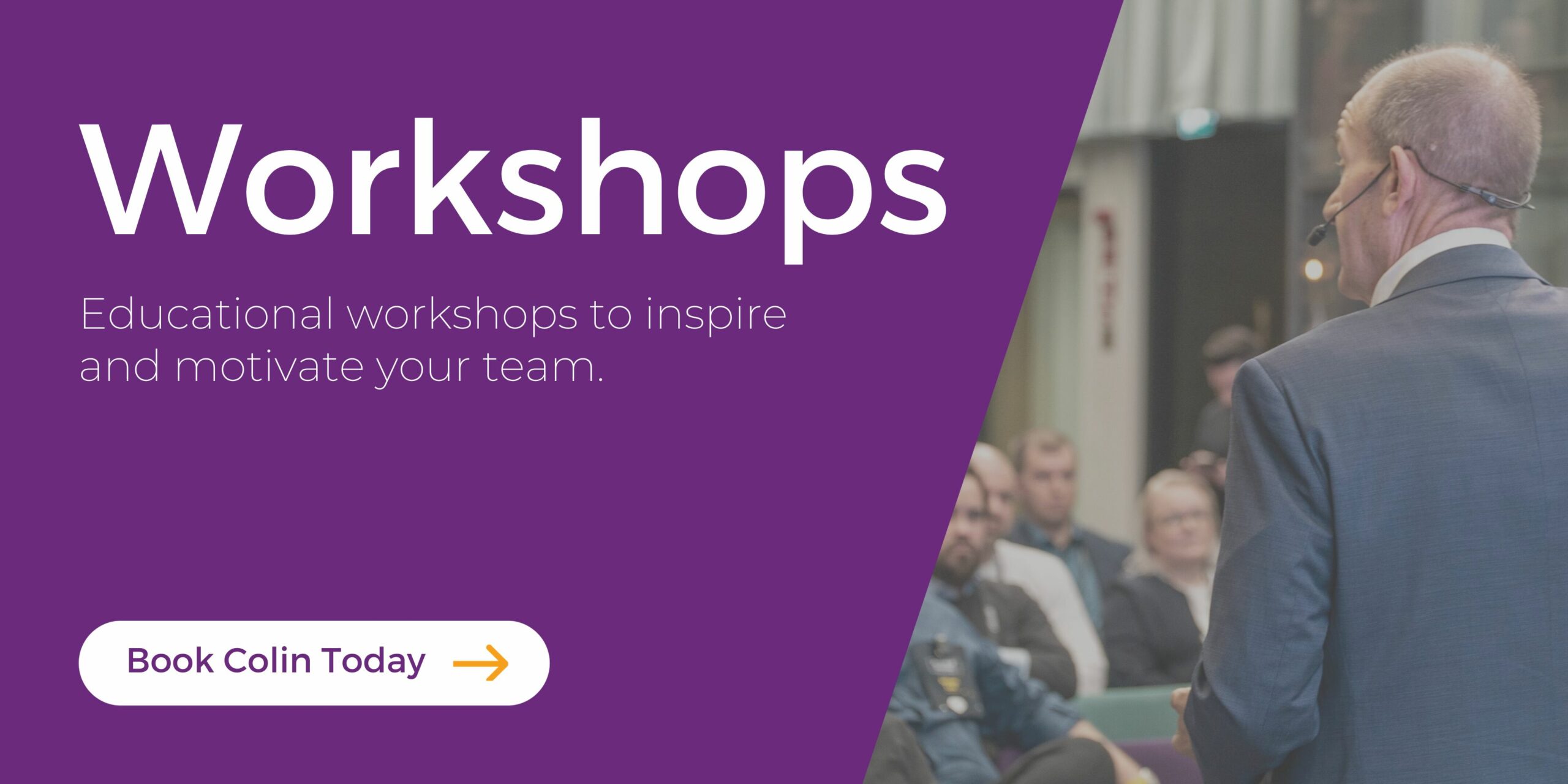I want to let you into a little secret. I’ve learned to ask customers a question over the years. Ready to know what it is?
Has anything changed since the last time I spoke to you?
This question is a good one. Customers change their minds on many occasions. If you think they are still where they were two weeks ago, when you last spoke, you might be surprised that things have changed. But you won’t be surprised if you ask the question.
Today, we will discuss why customers change their minds and what you can do about it.
Watch Colin talking about this on YouTube:
Subscribe to our YouTube channel here to see all the latest videos!
The essential theoretical insight regarding why customers change their minds is that we often think of our minds as unitary, meaning only one version of our minds. In reality, we have multiple versions of ourselves that can become activated under different circumstances.
All of us have two ways of thinking about things. Professor Daniel Kahneman called them System One and System Two in his book Thinking Fast and Slow. In our book, The Intuitive Customer, we called them the Intuitive and Rational Systems.
We apply different cognitive systems to making a decision. Sometimes, we use the fast and automatic Intuitive System and other times, we use the slow and deliberative Rational System.

However, while this is a critical distinction, it is not the only one. There are all kinds of different dichotomies within us. Consider abstract thinking versus concrete thinking or short-term thinking versus long-term thinking or emotional, hot cognition versus sensible, cool cognition.
There are also different temporal perspectives. For example, you could think about where you are now versus where you will be. These are different versions of the self. You could explain why people change their minds as they are different people from one time to another.
So, if you’ve decided to use one mindset or perspective and later consider the same decision with a different one, you might realize you don’t like the previous decision. Thus, you will change your mind.
The Intuitive and Rational Systems Influence on Decisions
If you listen to what people say, they often mention that they were thinking about it. So, what does that mean? What frame or mindset are they using?
For example, your intuitive system is always on, a gut reaction to things. Also, it doesn’t take any energy to make that decision because it’s always there. In contrast, the rational side uses a logical process where you have to think and use energy.
It’s not a problem that we have multiple mindsets, approaches, or perspectives. The problem might occur when you switch perspectives or mindsets from time one, when you make the decision, to time two, when you reconsider the decision.
In the 1970s, researchers asked undergraduate students to choose a poster they might take home to put on their wall. Then, researchers asked a second group to fill out a survey on the posters that asked questions and sought feedback from several perspectives. Then, the researchers had undergraduates choose a poster after the survey and analysis.
In other words, the first group chose intuitively, and the second group rationally. When the researchers followed up with the students later, the students in the second group were less likely to put it on the wall and keep it there. They didn’t rate them as highly as the first group, who chose intuitively.
Now, most of us interact with a poster intuitively. We like it, or we don’t.
There are some posters that you react to rationally. I’ve got a poster on my wall with the Birds of North America, and I like to sit there and stare at that sometimes and learn about various birds.
So, there are exceptions. However, most of the time, it’s just art. It’s something that you pass by and makes you feel good, or it doesn’t.
Interestingly, the second group was likelier to choose a funny poster over a pretty one. In their analysis, they thought the wit made the poster a better choice. However, walking by a poster or living next to it, you don’t always process the humor. By contrast, a pretty picture still registers even if one isn’t consciously enjoying the poster.
The Curse of the Wish List
My podcast partner, Professor Ryan Hamilton, recently published research on a context where people change their minds, which the research team called decision-delay tools. This area would include the “Wish List.” Sometimes, we use the shopping baskets online as a wish list, loading the merchandise in it and leaving it there…sometimes forever. In other cases, people might make a physical list.

The research team found that when people put items on a list and then return to it later, they’re less likely to buy it the second time than the first. The explanation was that people consider several things when they evaluate things to buy. These can include implementation things like cost, delivery, setup, and so on. However, we also think about the coolness of it, the excitement of owning it, and other more emotional things. So, we put it on a list and “think about it.”
When people return to a Wish List, abandoned cart, or physical list, we often have already gotten over the coolness and excitement factors. Instead, we focus on the implementation parts. These areas create less compelling reasons to buy something and could be a potential reason for shopping cart abandonment.
It is essential to understand which mode your customer is in and where they are in the journey. If you’re doing your journey map appropriately, you should have some insight into how your customer thinks and feels at each stage, their mindset, and what information is essential to them.
So, if you can get some insight into how they’re processing information or making decisions, that can help you identify these potential mindset switches. Especially if you’ve got a long sales cycle where somebody meets their salesperson a few times before the sale is delivered, there are many opportunities for people to cancel. Are they changing mindsets from the early part of the sales process to the late part? Identifying when it happens in the journey can help you proactively keep the sale on track.
And Then There’s Cognitive Depletion to Consider
Our two cognitive systems do not require the same resources. Therefore, if we are low on a resource, we are more likely to choose the one that requires less of that resource.
Energy is one of these resources. We have more of it at some times over others. So, when we have more of it and need our Rational system, we are more likely to use it. However, if we need to use the Rational System and we don’t have energy, we might skip it and lean on the more energy-efficient Intuitive System.
This situation happened with a home improvement client we worked with previously. The salesperson would visit customers in -home, after working hours to present their product. The customers would buy that night and then call to cancel the following day. Cognitive Depletion was the likely culprit. At night, the customers relied on their Intuitive System to make the decision, but after getting some much-needed rest the next day, the Rational System had something to say about it. Hence, the cancellations. Therefore, an essential tool for your journey awareness is to know when customers are likely to be suffering from Cognitive Depletion and build ways to manage that for customers.

Moreover, my podcast partner has other research showing that switching between the two thinking systems is exhausting. Mentally changing gears can wear down customers, too.
For example, during COVID, many parents were working from home while their kids were attending school from home, too. Therefore, people switched between managing kids to managing work and back again. Everybody was exhausted from it.
What You Should Do With This Information
The first practical advice is to ensure your journey map is complete. In particular, think about the following: Do you have the essential stages, how people decide, and the information they’re processing? Which mindsets are they using?
We’ve discussed the Intuitive and Rational Systems, which is an excellent place to start. However, there is no need to limit yourself to these. People make decisions in many ways, such as thinking in the abstract or concrete or short-term versus long-term perspectives. These mindsets change the way people make decisions.
So, look for those shifts and then plan for them. For example, to get in the door with the customer, we first convince them intuitively. Then, once inside, we need to follow up with a rationale to move them forward in the sales process. Planning those tactics into your journey process is essential.

Colin has conducted numerous educational workshops to inspire and motivate your team. He prides himself on making this fun, humorous, and practical. Speak to Colin and find out more. Click here!


